Housing
Resilient housing keeps Bay Area communities intact and allows residents to remain in place after a disaster to support local businesses and engage in recovery decisions. ABAG’s Resilience Program supports resilient housing in the Bay Area with strategies for implementing housing policy, including policies focused on residential seismic safety and sea level rise.
Stronger Housing, Safer Communities
Effective, expeditious recovery from disaster depends on retaining housing. Limiting catastrophic housing damage and keeping residents in their homes not only helps people who may lack the resources to effectively recover from a disaster, but keeps communities intact. For the Bay Area as a whole to become more resistant to disasters, jurisdictions need comprehensive, actionable strategies to reduce housing vulnerabilities.
The following resources address the need for more resilient housing, with a complete set of policies focused on housing which jurisdictions planning housing policy may find useful for their planning efforts. These policies include a concentration on seismic safety and sea level rise.
In addition, we have collected several policy support resources very specifically focused on residential seismic safety, including model ordinances cities can adapt for their own use.
Stronger Housing, Safer Communities: Strategies for Seismic and Flood Risk
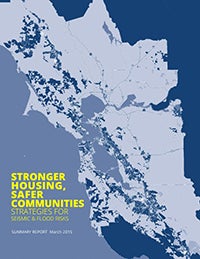
A technical component of the 2015 multi-agency project led by ABAG and BCDC to assess, characterize and address risk to local communities, this manual collects the complete set of 80 state-, regionally- and locally led strategies developed by the project, offering them for use by local jurisdictions throughout the Bay Area. These strategies support action at multiple levels to address seismic and flooding vulnerabilities in the region. A summary report offers additional background and higher-level training for advancing safer housing policies in communities.
Residential Seismic Safety: Soft Story Structures
Some of the most susceptible structures to shaking damage are soft-story apartments and condominiums. Built to prior building codes, a soft-story residential building is one that has open parking or commercial space on the first floor and housing on higher floors. In an earthquake, ground shaking causes such structures to sway and sometimes collapse. A soft-story collapse can have particularly disastrous consequences, killing people occupying the open areas and displacing residents.
This section offers policy resources for local policy and planning efforts. See our additional resources for homeowners and residential property owners.
Soft Story Retrofit Program Development
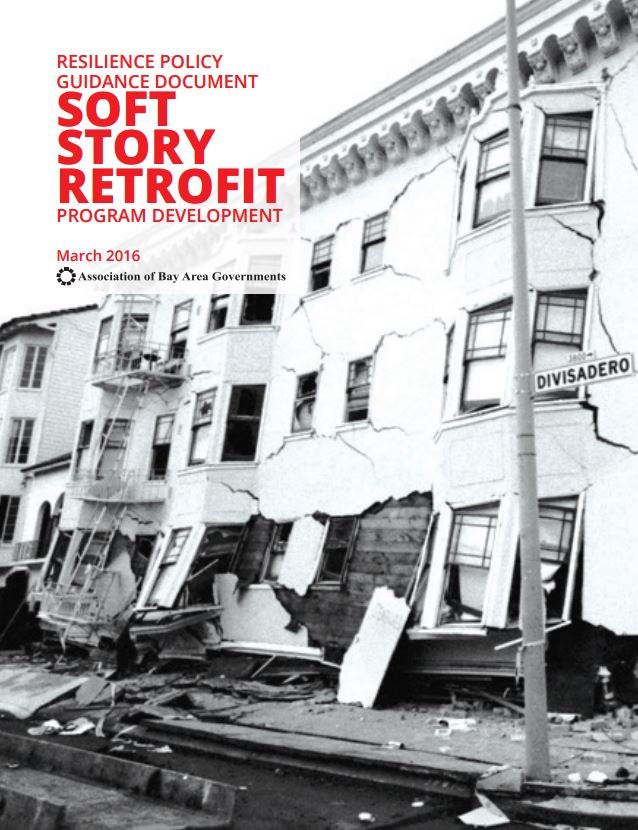
This guide provides information gathered from local experience and recommended practices for how to understand the problem that “soft story” buildings pose for jurisdictions and the region. It advises how to develop programs to reduce the earthquake risks of existing “soft story” buildings and to increase the resilience of the region’s housing. While the information presented here is based on extensive earthquake engineering knowledge, this guide is intended to be used by a non-technical audience, including jurisdiction staff and elected officials, to help guide policy development, adoption and implementation of retrofit for this common, fragile housing type.
Soft Story Model Ordinance and Handbook
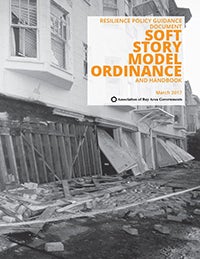
This report presents model ordinance provisions for a range of feasible soft story mitigation programs, consistent with California law and coordinated with the 2016 California Existing Building Code. The report includes background and commentary, as well as instructions for customizing the model provisions for a specific jurisdiction and notes on program implementation.
Residential Seismic Safety: Single-Family Homes
This section offers policy resources for local policy and planning efforts. See our additional resources for homeowners and residential property owners.
Model Local Government Resolution for Crawl Space Retrofit
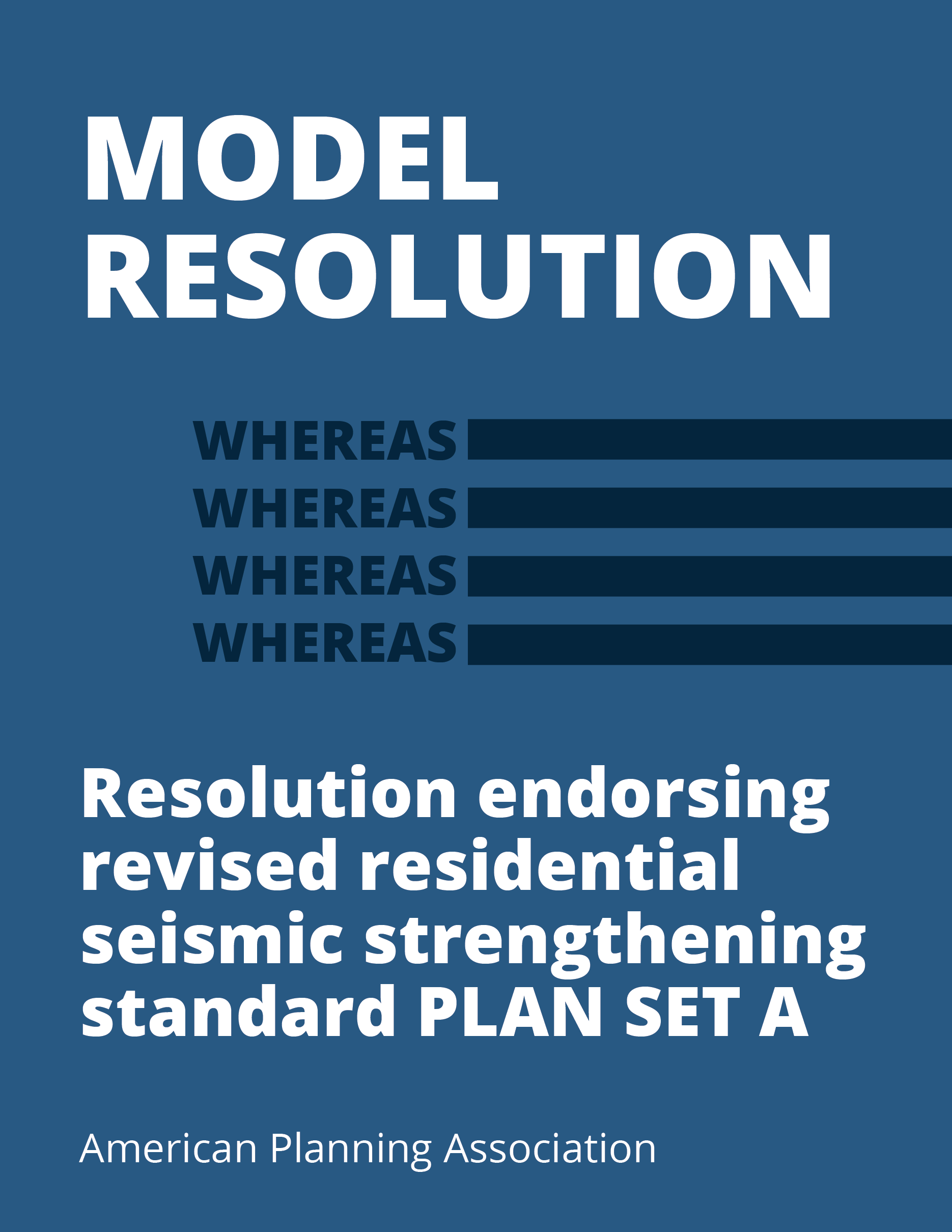
A templated model resolution for use by jurisdictions to adopt Standard Plan Set A (below), Plan Set A is a standardized method for strengthening certain home types to better withstand earthquake shaking. It is specific to homes with a crawl space that have insufficient anchorage to the foundation and insufficient bracing of the crawl space. For more information about this home type, visit the Home Quake Quiz resource on single-family homes.
When approved by the local building official, the plan set may be used to strengthen many older homes without the need for an engineer to develop costly site-specific plans and design calculations. This plan set provides a low-cost method to help improve an older home’s chances of surviving an earthquake.
A Standard Plan for Retrofit of Single Family Homes
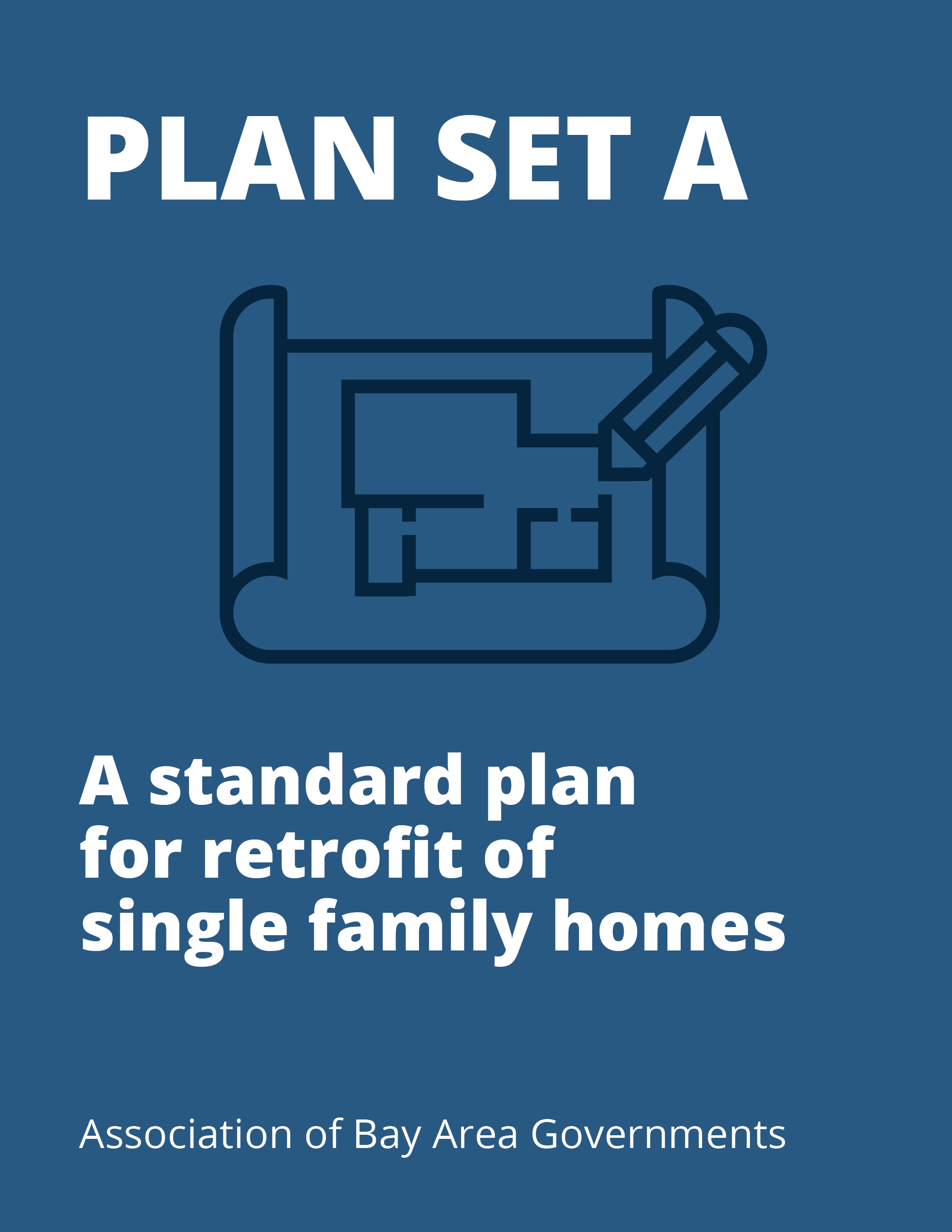
This plan set provides a standardized, low-cost method to help improve an older home’s chances of surviving an earthquake. A templated model resolution for use by jurisdictions to adopt Standard Plan Set A (below), Plan Set A is specific to homes with a crawl space that have insufficient anchorage to the foundation and insufficient bracing of the crawl space. For more information about this home type, visit the Home Quake Quiz resource on single-family homes.

